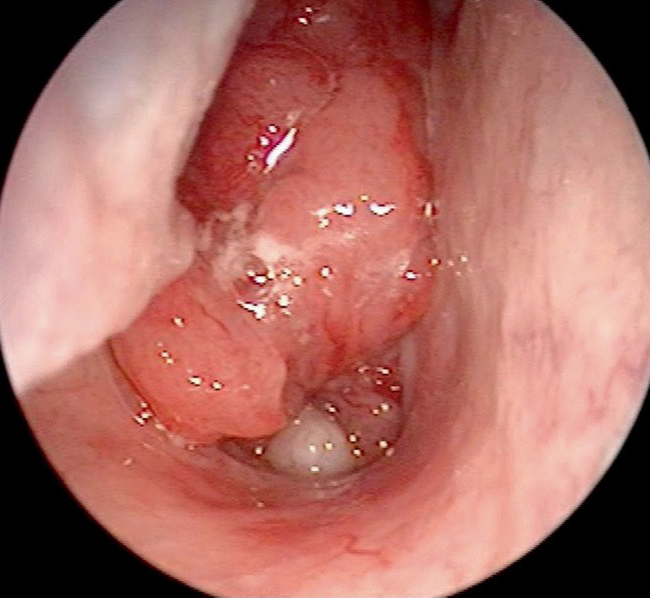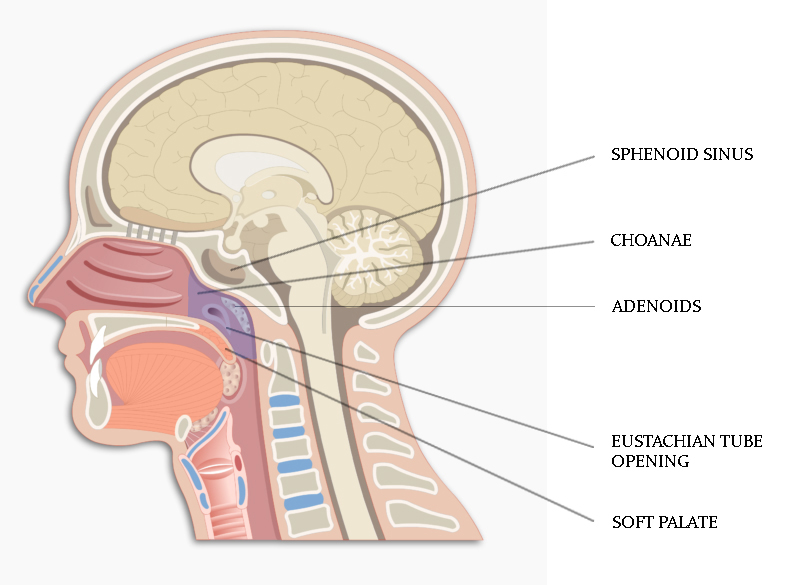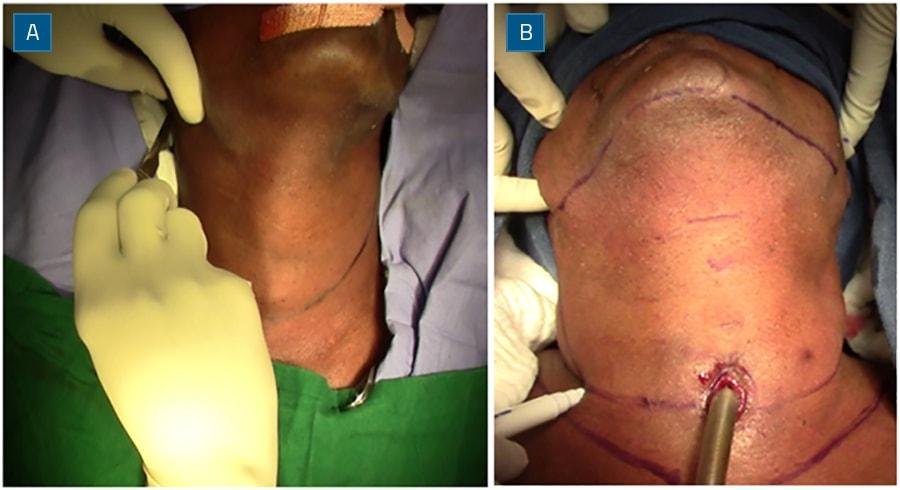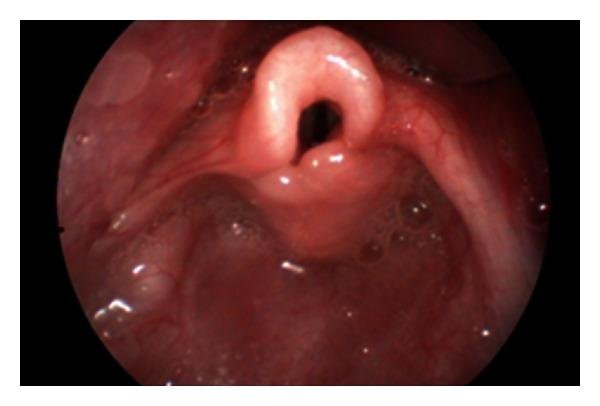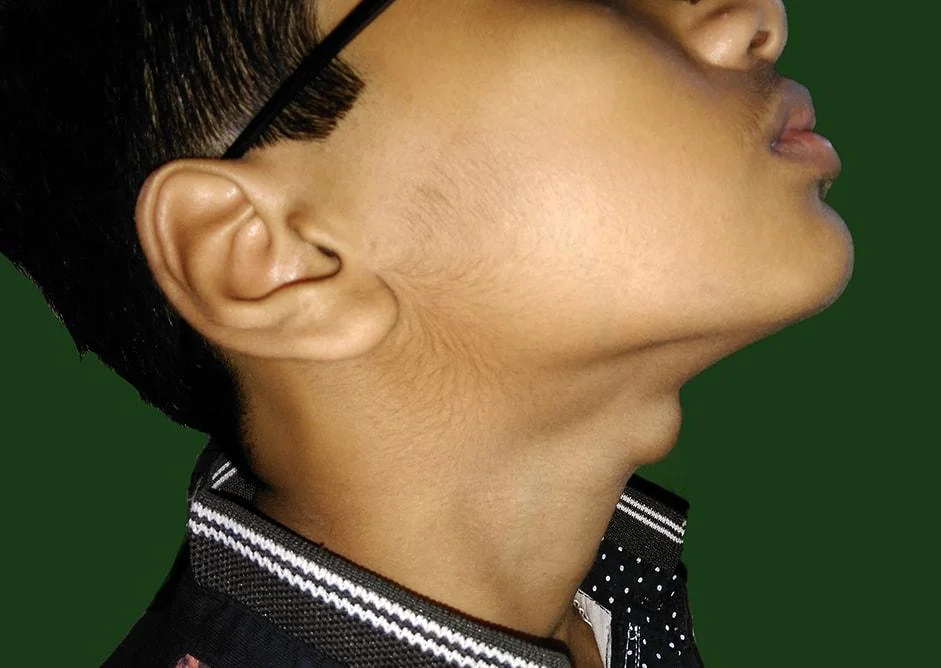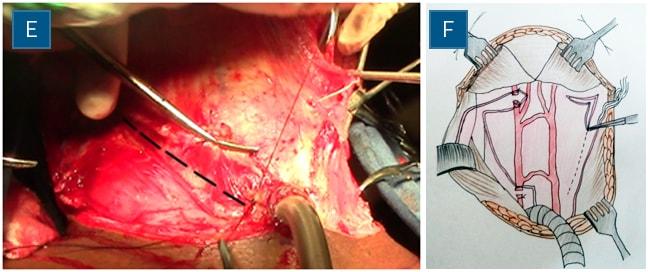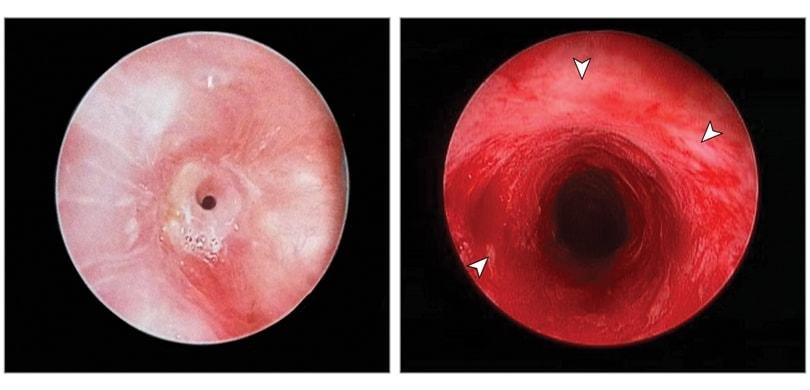Laryngeal Exposure (Opening) Scores
Direct laryngoscopy is a routine procedure conducted to visualize the larynx (voice box), to access, evaluate and treat voice problems. Usually, the laryngoscope is placed through the mouth and the […]
Posted on
TNM Staging of Nasopharyngeal Carcinoma (AJCC 8)
Malignancies arising in nasopharynx / nasopharyngeal carcinoma (NPC) have different natural behavior and therapeutic consideration than other head and neck cancers. Nasopharyngeal carcinoma also has a very skewed geographic and […]
Posted on
Anatomy and Physiology of Nasopharynx
The nasopharynx is an air-containing cavity at the back of the nose, which occupies the uppermost extent of the aerodigestive tract. It’s like a small cuboidal box about two to […]
Posted on
Best practices for Safe Nasal Irrigation
Nasal irrigation, (also termed as nasal rinsing, washout, douching or lavage) is a personal hygiene practice in which a person’s nasal cavity is washed with saline water to flush out […]
Posted on
NICE guidelines for Cochlear implantation in children and adults
The National Institute for Health and Care Excellence (NICE) is a non-departmental public body in England, that provides national guidance and advice to improve health and social care. On 7th […]
Posted on
TNM Staging of Oropharyngeal Cancer – Updates in AJCC 8th Edition
The recently released 8th edition of the American Joint Committee on Cancer (AJCC) Staging Manual, Head and Neck Section, introduces significant modifications from the prior 7th edition. In the head and neck […]
Posted on
Indications and Contraindications for total laryngectomy
Total laryngectomy is a surgical procedure mostly done for malignancies involving the larynx. In this surgery, the entire larynx (voice box) is removed by resecting the trachea and bringing out […]
Posted on
WHO launches “hearWHO” app for mobile devices to help detect hearing loss
To mark the World Hearing Day, the World Health Organization (WHO) has launched “hearWHO“, a free application for smart mobile devices which allows people to check their hearing regularly and […]
Posted on
Cell phone radiofrequency could enhance head and neck cancers – New study says
Developments in wireless communication technology over the last twenty years resulted in the increasingly widespread use of mobile phones and wireless systems for communication purposes. This has led to concerns […]
Posted on
Laryngomalacia – clinical features, surgical and medical management
Laryngomalacia also called “Dis-coordinate pharyngo-laryngomalacia” is the most common congenital lesion of the larynx (60-70%) and is the most common cause of congenital stridor in neonates and infants. The condition […]
Posted on
Thyroglossal cyst – Pathogenesis, Clinical features and Treatment options
Thyroglossal duct cyst (TDC) is a frequent congenital midline anomaly of the neck which usually manifests during the first decade of life. TDC is an epithelial lined tract that connects the tongue […]
Posted on
Noise Induced Hearing loss (NIHL)
Noise induced hearing loss (NIHL) is defined as reduction in auditory acuity (hearing ability) associated with long term exposure to loud sounds. It is the second most common form of sensorineural […]
Posted on
Prestin and Otolin 1 – early biomarkers of Noise Induced Hearing Loss (NIHL)
Noise-induced hearing loss (NIHL) is defined as a reduction in auditory acuity (hearing ability) associated with long term exposure to loud sounds. It is the second most common form of […]
Posted on
Total Laryngectomy – Evolution, Workup, Surgical steps and Complications
Total laryngectomy is a surgical procedure in which the entire larynx is removed by resecting the trachea and bringing out the lower stump as a respiratory opening in the anterior […]
Posted on
Replacement of trachea with aortic grafts – a novel treatment for tracheal stenosis
Replacement of trachea after extensive resection still remains as a major challenge for the thoracic surgeons even after decades of intensive research. End to end anastomosis is difficult or almost […]
Posted on

